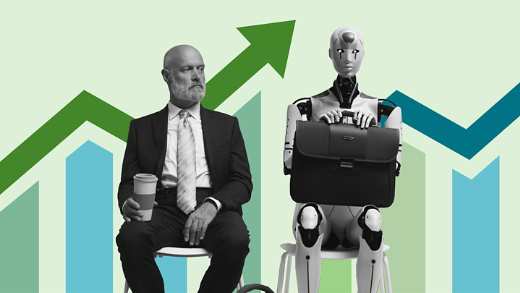With the notable exception of China, countries around the world have struggled to get their economies firing on all cylinders without COVID-19 infections flaring up again. Until a way to contain the virus is found, recoveries are likely to remain stop-start and fragile, argue Ian Pizer, Mark Robertson and Sunil Krishnan.

As data lays bare the huge economic damage being wreaked by COVID-19, in turn roiling financial markets, investors are understandably eager to figure out the likelihood of getting the pandemic under control. Unfortunately, amid the deluge of information to process, those looking for answers are faced with conflicting signals.
Take the case of the global hunt for a knock-out vaccine. According to the World Health Organisation, there are currently 165 candidates, at different stages of development, around the world.1 Making sense of the news flow is not straightforward.
“Coronavirus vaccine hope rises after a flurry of positive results”, said the headline of a July 28 report in the New Scientist.2 However, just a day later the head of the UK government’s Vaccine Taskforce warned a “silver bullet” to beat COVID-19 was “unlikely”, according to a report in the Financial Times.3
The search for drugs that might cure, or at least improve outcomes, has led to a confusing picture
The search for drugs that might cure, or at least improve outcomes, has led to an equally confusing picture. Take what some consider to be the leading candidate, Gilead Sciences Inc’s remdesivir. The antiviral medication was originally developed in 2009 as a treatment for hepatitis C. When it failed to work as hoped, it was repurposed and studied as a potential treatment for Ebola, although it once again proved ineffective.
Gilead’s share price was buoyed in April after the company claimed the drug shortened COVID-19 patient recovery times. On July 10 it went further and claimed it was associated with a “62 per cent reduction in the risk of mortality”.4 The news led to a surge in US stock indices.5
However, while the shorter recovery times were demonstrated in randomised control trials, shortages of the drug have been an obstacle to running the kind of trials required to conclusively prove this second claim. Three weeks later, a panel of international experts convened by the British Medical Journal said while remdesivir may be worth prescribing for patients with severe disease, evidence of its benefits remained inconclusive because most of the trials so far have been small and have limitations.6
Predictions about the direction in which economies are heading seem just as uncertain
Perhaps understandably, predictions about the direction in which economies are heading seem just as uncertain. The anticipated shape of economic recoveries has been variously described as resembling a V, U, W and L. But even officials from the same central bank can’t seem to agree on which of the four letters is more likely.
For example, the Bank of England’s chief economist, Andy Haldane, said on June 30 there were signs of a V-shaped recovery.7 But a fortnight later, governor Andrew Bailey warned: “I'm always a bit nervous about using letters to describe recoveries”.8
As much of the world went into lockdown in March, Ian Pizer (IP), senior multi-asset and macro strategist at Aviva Investors, explained why, when it comes to pandemics, investors should listen to the real experts. Five months on, he discusses the latest developments in the global effort to bring the pandemic under control, while Mark Robertson (MR), head of multi-strategy funds, and Sunil Krishnan (SK), head of multi-asset funds, offer their assessment of what this means for the economic outlook and financial markets.
What is your current thinking on the search for a vaccine?
IP: The results so far are broadly in line with what we would have hoped to see. Multiple candidates produce a robust measurable immune response. However, we don’t as yet have sufficient knowledge to evaluate whether these immune responses are sufficient to protect against infection or disease. This is the purpose of the phase III trials that are starting for several of these candidates.
The results so far are broadly in line with what we would have hoped to see
It is reassuring that we can see these candidates can generate a response in line with, or even exceeding, that of recovered patients who have cleared the virus. This isn’t just antibody responses either. One of Pfizer/BioNTech’s vaccine candidates has demonstrated a robust T-cell response on both the helper T-cell (CD4) and killer T-cell (CD8). The Oxford vaccine candidate has shown a T-cell response, but hasn’t demonstrated the type, and the Moderna candidate has shown a CD4 response.
There has been concern that the level of antibodies in recovered patients waned unusually rapidly. However, if you concentrate on what immunologists are saying, the falls in several of the key antibody responses are in line with what would be expected post infection. On infection, you produce high levels of antibodies to clear it, but the response is designed to fall off before being maintained at a low baseline level. It would be incredibly unhealthy to maintain these levels for every infection you ever had.
More recent larger studies have provided reassurance that naturalising antibodies to the spike protein seem to be behaving in line with what would be expected, and that on re-exposure to the virus their level would be expected to rapidly increase.
Having said all that, it is not unheard of for a vaccine to generate a strong immune response, for animal models to show protection, and yet it fails to demonstrate protection in phase III trials. So there are grounds for optimism, but the evidence is not yet conclusive.
Could you estimate the probability of a vaccine, that at least works partially, being developed by the middle of next year?
IP: Given the phase III trials that have been announced for several candidates, we can be confident that if one of these induces sterilising immunity (immunity from actual infection rather than immunity from severe disease resulting from infection) we should know before the end of this year. Once we have a successful vaccine, we will have a baseline to better evaluate other candidates against and so may be better able to prioritise which candidates to concentrate efforts on.
Even if a vaccine is 100 per cent effective, you’ve still got to get everyone vaccinated globally and that’s going to take a long time
You could try to put a probability on it, but even experts seem to be saying there’s too much uncertainty to make it worthwhile. What we can say is there seems to be no evidence a vaccine won’t work. It is positive that nobody has said we’ve got to go back to square one.
All the same, it’s important to recognise there is no silver bullet and it is likely to be a long slog out of this. Even if a vaccine is 100 per cent effective, you’ve still got to get everyone vaccinated globally and that’s going to take a long time. Even in the developed world, it’s not going to happen quickly as you’re going to have problems with vaccine uptake.
If a vaccine can’t be found, what’s the outlook for treating the disease?
IP: I’m sceptical of the chances of a cure, but we should expect continued progress in treatment. There is already evidence of this. Recent US fatalities have been lower than might have been expected given rates of infection over the past six weeks, even allowing for the lag between the two. This suggests treatment has already improved materially since the spring. This isn’t from a silver bullet but rather a series of lessons, many of which are actually low tech.
For example, in the early stages it was felt getting severe cases onto ventilators early might improve outcomes, but in fact attempting to keep marginal cases off a ventilator has proven more effective. Something as simple as proning (rolling patients onto their stomachs) has also helped.
There is a much better understanding of the phases of the disease
There is also a much better understanding of the phases of the disease, with the first week being dominated by viral spread, but the deterioration in the second week being the result of an overactive immune response more than viral activity. So steroids, which were initially avoided due to concern they might inhibit the immune response, were tested in this second phase. Dexamethasone, a cheap, widely available drug, has been proven to reduce mortality significantly in more severe cases.
In the coming weeks, we should learn the results of trials on the benefits of convalescent sera and monoclonal antibodies. There is reason to believe improvements will continue to be made. Unfortunately, while these are clearly positive developments, they don’t materially lower the burden on hospitals from high levels of infection.
To do that we need an early intervention able to reduce the probability of an infection becoming severe enough to result in hospitalisation. One study suggests interferon beta could play a role, although it was small and, as yet, the work has not been peer reviewed.
Away from treatment, the other area where there is potential for a leap forward is testing. The most positive idea I have heard is being promoted by Michael Mina (assistant professor of epidemiology at Harvard T. H. Chan School of Public Health and a core member of the Center for Communicable Disease Dynamics). The idea is to utilise less sensitive but low-cost paper-strip tests that offer rapid diagnosis. By regularly testing large numbers, the objective would be to catch people early and force them to self-isolate before they become infectious.
The aim would not be to replace the polymerase chain reaction (PCR) nasal swab in a clinical setting. PCR is very sensitive so it can pick-up evidence of infections over a long period of time. While this is important for clinicians trying to evaluate which treatment to give, a regular, low-cost rapid test is superior for the purposes of reducing transmission.
However, although the technology is already there, it will require a change of mentality. Currently, these tests are criticised for being inaccurate in comparison to the PCR test. This misses the point. They are not trying to replicate the PCR test; rather, they are trying to identify infectious people, and they are very accurate at identifying those with higher viral loads.
In the event vaccines and treatments take longer to come we can still control the spread of infection
In fact, if the purpose is identifying infectious people, the PCR test is less accurate as people who are no longer infectious give false positive readings. This technology offers reasons for optimism; that in the event vaccines and treatments take longer to come we can control the spread of infection with far lower restrictions and economic pain than we’ve seen so far in the pandemic.
China seems to have done a remarkable job of keeping a lid on infections at the same time as reviving its economy. What does its experience teach us?
IP: I think China taught us early on the virus is way more containable than most western experts had believed. They thought we might be able to flatten the curve but we would be just delaying a wave that could not be held back indefinitely. The view now is that it can be contained, depending on how determined you are. The less you have to worry about individual privacy, the easier that is. That’s why China is in a camp of its own.
It is clear a state’s ability to suppress the disease is assisted by an ability to override privacy concerns
Everyone is excited about the idea technology will save us. But the reality is that no other country has the sort of take-up of apps that would be needed to achieve this. In China, take up wasn’t optional: you had to have their app. If you couldn’t show your green, amber or red status, you couldn’t get public transport or wouldn’t be allowed into shops.
South Korea has been quite effective for a number of reasons, not least because it has had full access to the geo-location data from phones. When someone has tested positive, authorities have notified others who are likely to have come into close contact with them. It is clear a state’s ability to suppress the disease is assisted by an ability to override privacy concerns.
The US experience is at the other end of the spectrum. What is the way forward there?
IP: The political situation in the US is the biggest impediment. Donald Trump is now saying it is patriotic to wear a mask, but if he’d been pushing patriotic mask wearing along with social distancing four months ago the country might have been in a better place.
Unless parts of the US can get infections really low they are unlikely to escape the problem
In parts of the south, their medical systems are not working again for non-COVID matters. Their issue is how to get infections back down to a level where their medical system can function normally again. In places like Arizona, Florida and Texas, we’re seeing behavioural changes coming back that seem to be suppressing the rate of transmission. But it’s unclear these will be enough on their own. Unless they can get infections really low and keep them there for some time, they are unlikely to escape the problem. That doesn’t mean there will be a repeat of what we saw in New York, London or northern Italy; but the risk is that any early attempt to reopen could lead to a swift return to problem levels of infection.
In the early days of the pandemic there seemed to be a view among some sell-side analysts that the US might not be as badly affected as some other economies. Has that changed?
SK: There was a feeling the US would be aided by not being overly dependent on international trade. But I don’t think anyone who knew what they were talking about had very strong conviction about how the pandemic would affect the domestic economy.
In general, the path of economic activity is on an upward trend
Many countries in Asia and Europe are gradually exiting lockdowns. In general, the path of economic activity is on an upward trend. Although US activity appears to have rebounded quite sharply too, it is difficult to judge the US’s relative economic prospects. That is because it has adopted a rather chaotic approach, with lockdowns eased quite quickly in some places. The ones that acted fastest are in some cases having to re-restrict activity.
While there are a lot of dangers in using a currency as a way of measuring the health of an economy, it seems as though the US has a more problematic or confused route out of lockdown. The fact the Federal Reserve is aware of this probably helps explains why the dollar has been so weak.
Will the central bank/government support we have seen be sufficient to avert another, potentially deeper and longer-lasting slump?
MR: Western governments stepped in to support household income on a massive scale, which was absolutely necessary to prevent an even sharper contraction in spending. At this point, we don’t have any clarity of the impact as they try and step back over the next quarter or so. We will probably get further stimulus in the US but, at some point, we will need to see the underlying strength of these economies coming through when this exceptional level of government sponsorship starts to be removed.
SK: Even if a vaccine were to pass its large-scale phase III trials tomorrow, we would still be faced with a lengthy rollout period during which current challenges to health and economic activity continue. Moreover, we have a number of emergency support measures, such as the UK’s job retention scheme or US Federal enhancement of unemployment benefits, which are due to expire or taper in the absence of additional legislation. That represents a potential shock to household incomes and confidence. This is why Federal Reserve Chairman Jerome Powell and others have made it clear further fiscal support is needed.
Many countries feel they will be able to manage future outbreaks through localised restrictions rather than nationwide lockdowns
The need will be amplified if there are meaningful pullbacks in economic activity resulting from further virus outbreaks. The evidence suggests that activity declines in areas where caseloads increase, even if official restrictions are not introduced. It is positive many countries feel they will be able to manage future outbreaks through localised restrictions rather than nationwide lockdowns. But this still presents a threat to investor expectations of a relatively steady path back to ‘normal’ spending and production.
MR: What I would say is that the co-ordination between fiscal and monetary policy on display is unlike what we saw coming out of the global financial crisis, where austerity was deemed to be the appropriate response to increased fiscal deficits. It is questionable how effective quantitative easing was in delivering growth or inflation, even though it propped up financial assets. It will be interesting to see how long into the recovery fiscal expansion will be pursued for.
What is your view on equities in the wake of their stunning recovery?
SK: Investor sentiment in equities is largely based on a steady path towards recovery, with consistent fiscal and monetary support. Disappointment in either is likely to damage sentiment towards risk assets and turn investors’ minds to further potential easing from central banks and governments.
Most experts think that having a vaccine ready for widespread deployment by spring would be an unprecedentedly fast outcome
Progress on a vaccine would obviously be viewed optimistically and provide support for equities – especially in areas where the pandemic poses an existential threat, such as leisure and airlines. However, it is important not to underestimate the time lags involved in any rollout. Most experts think that having a vaccine ready for widespread deployment by spring would be an unprecedentedly fast outcome. But that would still leave the Northern Hemisphere exposed through the coming winter.
We are positioned cautiously as we believe the path to recovery may be slower and bumpier than equity investors expect. We prefer European markets, partly because US equity valuations have got so stretched relative to other markets, partly because European countries seem to have done a much better job of navigating their way out of lockdown, and partly because Europe appears to have got its act together in terms of the fiscal response. The political agreements remove some of the tail risks we have been living with following the euro zone crisis of 2010-2012.
I am wary of being heavily underweight the US market given the extent to which many big US technology companies have benefitted from trends brought on by the pandemic, such as the shift to working and schooling from home and increased online shopping. Even if you think many of these shares are overpriced, it is a difficult process to stand in the way of because ultimately the validation or otherwise of these valuations is going to play out over a long period of time.
Having said that, and while recognising if you strip out the top ten stocks the S&P 500 has actually struggled since April, you can no longer say the US market is a safe haven from economic turmoil in a way you may have been able to in past downturns.
It appears recent company results have beaten expectations. What did you make of them?
MR: We saw some fantastic results from the big technology companies, but even other numbers coming through have not been nearly as bad as people had feared. To date, nearly 80 per cent of companies in the S&P 500 have beaten expectations. While earnings per share are expected to be down 35 per cent in the second quarter compared with the same period in 2019, that is an improvement on the 44 per cent decline expected ahead of the reporting season. One of the most interesting questions now is whether the rally, if it continues, starts to broaden out beyond the big technology stocks. I haven’t seen anything that gives much conviction companies are getting a whole lot more upbeat about the outlook.
There has been a reluctance to offer a great deal of clarity about what’s going to happen in the second half of the year
SK: Even when companies have shot the lights out, there has been a reluctance to offer a great deal of clarity about what’s going to happen in the second half of the year, and quite right too. I think there’s very little upside for these companies now to be sticking their neck out saying it’s all going to be great, especially if that marks them out from competitors.
What is your view on bond markets?
IP: The US has still got the highest-yielding bonds. As you go further along the curve, it’s probable you will make a modest return on them as it looks as if it will be a long slog out of this economic crisis. You might actually make quite a bit a money if a vaccine can’t be found. But if you look at most markets, there’s very little money to be made.
SK: Duration has been the only game in town this year in terms of protecting portfolios against declines in equities. However, we now see limited scope for government bonds to provide the same level of portfolio protection. This is one reason why we are looking for other ways to achieve defensive positioning. For example, we have more defensive relative value positions in the portfolio as hedges for assets we’re keener on, like credit.

















